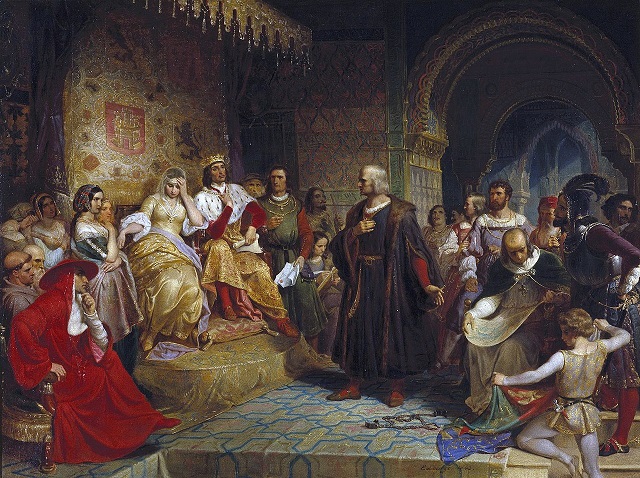Article by Robert Petrone
In the last article of my “1492 Project” series in L’Idea Magazine, “Christopher Columbus: the Greatest Hero of the Fifteenth and Sixteenth Centuries (as Revealed by the Primary Sources),” titled, “The Second Voyage” or “Columbus’s Underground Railroad,” I recounted how Christopher Columbus, the High Admiral and Governor of the West Indies, had freed the Taino slaves; overseen the building of multiple settlements in harmonious coexistence with their tribal neighbors; and defeated the Carib marauders, bringing peace and slowly restoring prosperity to the land. He brought to the West Indies what I call the Pax Columbiana, as his very name suggests: “Columbo,” Italian for “dove,” the symbol of peace.
This week’s article tells of the shattering of that fragile peace by the true villain of the West Indies whose deeds have, of late, been falsely attributed by revisionist “historians” to the good Admiral Columbus. The true terror of the West Indies — the man known to the Jihadist invaders of Europe as their bane and conqueror; to the Spaniards as their war hero of the Reconquista, but to the innocent Tainos of the West Indies as the racist, rapist, maimer, murderer and genocidal maniac — was none other than Francisco de Bobadilla. To Christopher Columbus, Bobadilla was the mariner-governor’s arch-nemesis.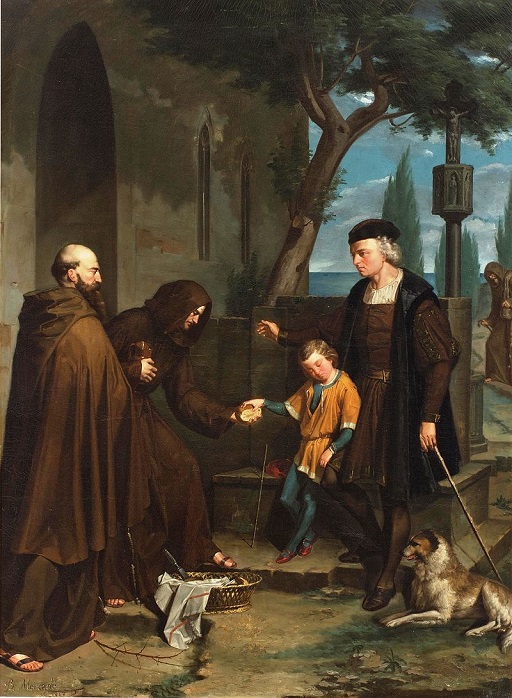

Even as Governor Columbus had finally brokered peace in the West Indies, a letter he had written to the Crown while still in the throes of the insurgencies of the hidalgos (the low, landed Spanish nobles) finally reached Spain. In it, he had requested the Crown send someone to aid him whom the hidalgos would respect. The hidalgos constantly rebelled against Governor Columbus for a multitude of reasons, including that he was not of noble birth and was a Genoan “foreigner[]” who, in their words, “had no experience of controlling people of quality” — in other words, high-born noblemen such as themselves (Hernando Colón, Life of the Admiral, Chapter 85). The self-characterization was ironic; many of them were, in fact, low-born criminals pardoned by the Crown in exchange for their agreement to accept a noble title and settle the tropical frontier of the West Indies.
Mainly, however, the tension arose because Governor Columbus refused to allow the entitled hidalgos to enslave the tribal islanders of the West Indies, and forced those same hidalgos to build their own settlements. Betrayed by his own mayor, and beleaguered by the hostilities of the conquistadors, Columbus complained to the Crown: “I wanted to escape from governing these dissolute people…full of vice and malice” and “begged Their Highnesses…to send someone at my expense to administer justice” (Letter of Christopher Columbus to Doña Juana de Torres, dated October 1500).
The Crown answered Columbus’s request, unaware that, since receiving the letter, he had actually single-handedly succeeded in suppressing the hidalgo rebellions with sheer diplomacy and without arms. As historian Bartolomé de las Casas, who lived through and personally witnessed these events, wrote in his Historia de las Indias (History of the Indies), “by now things were calm, the land was rich and everyone lived in peace (Book I, Chapter 181), Columbus’s hard-earned Pax Columbiana. The monarchs appointed Comendador Francisco de Bobadilla, reconquistador and knight of the Order of Calatrava, on May 21, 1499, a dark day in history.
The King and Queen informed Bobadilla of the mutual letters of complaint written by the hidalgos and Governor Columbus. The monarchs instructed Bobadilla to conduct an independent investigation of the competing claims; make findings of fact; and, if he found that the wrongdoing really did lie with Columbus, to unseat him and take over as Viceroy, a hereditary title that would be passed down through generations. This was all the ambitious reconquistador 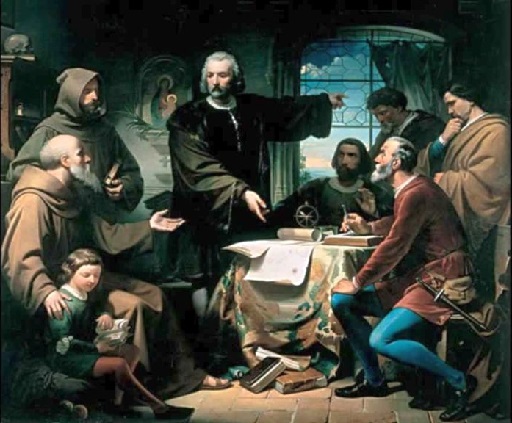

The fate of the West Indies made a turn for the worst in late August, 1499, when Comendador Bobadilla set foot on the shore of Hispaniola. He conducted no investigation. He made no findings of fact. All of the primary historical sources agree that his first deed upon landfall was to arrest all three Columbus brothers on sight, shackle them and keep them in the bowels of a prison ship for exile to Spain. Then he commandeered Governor Columbus’s house, personal effects and papers, having “kept most hidden” any documents “which would have cleared” the lies that were to follow (Id., Book I, Chapter 181). Bobadilla “began to draw up a case against” the Columbus brothers, “citing as witnesses the Admiral’s enemies” among the recalcitrant and rebellious hidalgos, “publicly favoring and encouraging anyone who came forward to abuse the prisoners” (Colón, Life of the Admiral, Chapter 85).
What followed may seem eerily familiar to the modern reader. “These witnesses were so malevolent and abusive in their declarations that a man would have to be more than blind not to recognize that what they said was prompted by passion, not by truth” (Id.).
Bobadilla took complete control of the settlements. “The day after he arrived he constituted himself governor, appointed officials, performed executive acts, and announced gold franchises and the remission of titles…for a period of twenty years, which is a man’s lifetime” (Id.). He did so to ingratiate himself with the hidalgos. He raised “adherents” by “allying himself with the richest and most powerful” of them. “He gave them Indians to work for them” and required, in return, that the hidalgos pay tribute to him, rather than to the Crown. He sold all the known lands and possessions of the Crown in the West Indies by public auction to the hidalgos. Of his “companions” he only required payment of one-third of the price.
Bobadilla had “no other aim but to enrich himself and gain the affection of the people” while he could. To that end, he “allowed the ill-disposed mob to speak all kinds of libels against [Columbus and his brothers] in public places.” They went about “posting abusive notices at the street corners.” Bobadilla “showed great delight” at the calumnious exhibitions and “each man did the utmost to rival his neighbor in such displays of effrontery” (Id.). 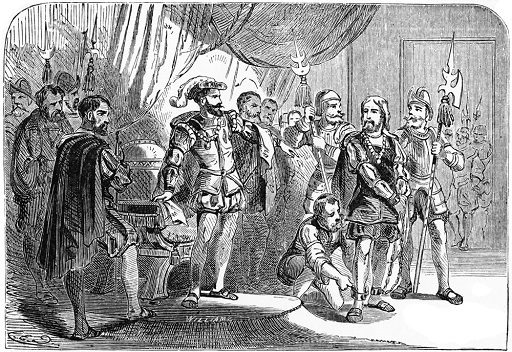

History, it seems, has repeated itself. As modern, entitled, recalcitrant, revisionist-history mobs in the United States — and indeed, so-called “educators” of revisionist history in American universities, high schools and grade schools — have modeled themselves after their lying, 15th-Century hidalgo
To add insult to injury, even as Christopher Columbus lay shackled and imprisoned in the bowels of the prison ship Bobadilla had commissioned to take him and his brothers back to Spain, Bobadilla gave the ship’s master, one Andres Martín, strict instructions to leave the prisoner in chains. Nevertheless, as the ship sailed, Martín offered to free Christopher Columbus of the manacles, a great testament to how affable a person Columbus was. Christopher Columbus refused. He defiantly declared that “only the monarchs could do this,” and insisted on principle on remaining shackled until he reached the royal Court (Bartolomé de las Casas, Book I, Chapter 181).
With his hands in chains, Christopher Columbus began penning a letter to the Spanish Crown, addressed to his friend, Doña Juana de Torres, the governess of Prince John, for whom his own sons had been made royal pages. He wrote that Bobadilla provoked the settlers, gathered “rebels and other untrustworthy people” and aroused “a quantity of people [who] did not deserve baptismal water before God or the world,” including slavers “who go out to look for women [and] girls [selling them] at a premium” on the slave market (Id.); some translations of this passage refer to the enslaved girls as being nine or ten years old, others that there were nine or ten of them currently on sale by the slavers as Columbus was writing his letter of complaint. Columbus would be sure to clarify matters once he appeared before the Crown. As Bobadilla’s prisoner, Columbus learned that Bobadilla “did everything in his power to harm me” and such damage to Hispaniola that “Their Highnesses…would be astonished to find that the island is still standing” (Id.).
This was just the tip of the proverbial iceberg; Christopher Columbus truly had no idea of the extent of Bobadilla’s depravity, as the worst of it occurred while the Genoan mariner was being shuttled across the sea back to Europe. Once Bobadilla had removed Christopher Columbus as an obstacle, as the new, self-appointed Viceroy, he unleashed all Hell on the West Indies.
Viceroy Bobadilla undid all the restraints on the Spanish encomienda system that Governor Columbus had effected in his years of reigning in the indolent hidalgos. Bobadilla eliminated the hidalgos’ requirement to pay all but nominal taxes. He imposed forced labor upon the tribal people as miners and cooks so his fellow hidalgos would not have to labor (Id., Book II, Chapter 1). Worse, Bobadilla assigned Indian tribes to [the colonists], thus making [the Spaniards] very happy” (Id.).
Young Bartolomé de las Casas, not yet a friar or historian, but still a settler and observer of Bobadilla’s atrocities, witnessed the comendador take control of the Crown’s military “force [which] was more than enough…to keep the Indians pacified, had [the hidalgos] treated them differently, but also to subdue and kill them all, which is what [Bobadilla’s forces] did.” Bobadilla exonerated and decarcerated all the traitorous hidalgos Governor Columbus had imprisoned for sedition and other crimes, most of whom were very violent men. De las Casas wrote, “I saw them a few days later, as if nothing had happened, safe and sound, happy and living as honored members of the community.” He further lamented, “You should have seen those hoodlums, exiled from Castile for homicide with crimes yet to be accounted for, served by native kings and their vassals doing the meanest chores. These chiefs had daughters, wives and other close relations whom the Spaniards took for concubines either with their own consent or by force” (Id.). By de las Casas’s accounting “three hundred hidalgos lives for several years in a continuous state of sin” after the removal of Columbus as governor, “not counting those other sins they committed daily by oppressing and tyrannizing Indians” under Bobadilla’s tyrannical reign (Id.).
In Christopher Columbus’s absence, Bobadilla and his hidalgos enslaved, raped and murdered tribal people, sometimes simply on a whim and as cruel jokes. Bobadilla’s men called the Tainos “dogs” and plundered their villages. Now, without Governor Columbus to keep the hidalgos in check, “they grew more conceited every day and fell into greater arrogance, presumption and contempt toward these humble people.” Without Christopher Columbus’s humane governance and the strict discipline that he had imposed on the hidalgos, they became “[s]oulless, blind and godless.” They “killed without restraint and perversely abused” the tribal peoples of the West Indies (Id.).
Bobadilla and his mob of hidalgo “grievance squads” engaged in another tactic the modern reader will recognize. In the words of de las Casas, Bobadilla enacted “the first plan of tyrants: to … continually oppress and cause anguish to the most powerful and to the wisest so that, occupied by their calamities, they lack the time and courage to think of their freedom” and, thus “degenerate[] into cowardice and timidity.” De las Casas posited that “if the wisest of the wise, whether Greek or Roman (history books are full of this), often feared and suffered from this adversity, and if many other nations experienced it and philosophers wrote about it, what could we expect from these gentle and unprotected Indians…?” (Id., parenthetical in the original).
With Bobadilla’s usurpation from Christopher Columbus of the governance of the West Indies, the encomienda, as well as Bobadilla’s own personal brand of murderous tyranny, reigned supreme. De las Casas writes of this dark time, “The Spaniards loved and adored [Bobadilla] in exchange for such favors, help and advice, because they knew how much freer they were now than under Columbus” (Id.).
Whereas Christopher Columbus, from the beginning, had always characterized the Tainos to the Crown as “intelligent” and willing and worthy to become Spanish citizens and Christians, with all the rights and privileges attendant thereto, Bobadilla, instead, spread virulent propaganda about the tribal peoples. Bobadilla deceived the monarchs into “believing them to be nonrational animals,” who were “incapable” of receiving citizenship or the faith, and perpetuated this lie “throughout the world” for the sole purpose that he might “keep power over them.” Of this “evil design of those deceivers and counterfeiters of truth,” De las Casas lamented, “may he who persists in it burn for such beastly heresy” (Id.). De las Casas’s lament merits repeating today.
Drunk with power and with an insatiable thirst for gold that no amount of Taino blood could slake, Bobadilla knew his reign of terror could not last long. In perhaps the most damning statement of record in this history, he explicitly told the hidalgos, “Take as many advantages as you can since you don’t know how long this will last” (Id.). De las Casas heard the statement with his own young ears. When he wrote of it years later in his official capacity as “Protector of the Indians,” he punctuated this grizzly account with the following words: “And let this suffice to account for the state of affairs on this island under Bobadilla’s government, after he had sent Admiral Columbus as a prisoner to Castile” (Id.).
Indeed Bobadilla warned his conspirators to do what they might in what time they had because he knew that his own calumnious writings against Columbus were lies soon to be debunked. He knew that his own deeds as the new Viceroy were nothing short of the most profane wickedness, and that when the Crown heard Christopher Columbus’s true accounts, Bobadilla’s reign of terror would be terminated.
Indeed, in the letter to Doña Juana, Christopher Columbus had already set forth to set things right, even in chains. He wrote that he relied not only on his faith for assurance and internal strength, but on his confidence in his position and the propriety of his deeds. “Comendador Bobadilla is striving to explain his conduct,” he declared in the letter, “but I will easily show him that his scant knowledge, great cowardice and exorbitant greed are the motives that pushed him into it.” He added assuredly, “Their Highnesses will know this when they order him to give an account, especially if I am present when he gives it” (Id., Book I, Chapter 181).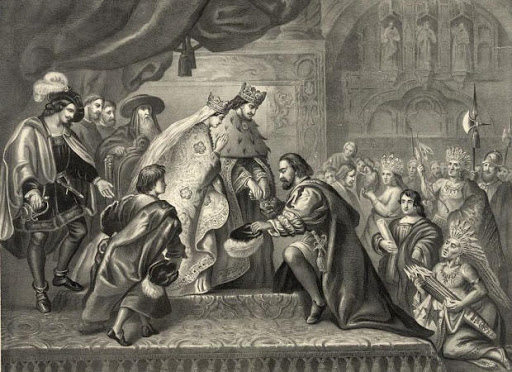

Though confident in his rectitude, Christopher Columbus bore no hubris and still wrote with humility about his ability to govern, despite that he had proven himself to be the greatest governor the West Indies had ever seen under Ferdinand and Isabella’s rule, if not the greatest governor the West Indies has ever seen. Despite having freed the Taino slaves, built multiple settlements and defeated the Carib marauders, bringing prosperity and a Pax Columbiana to the land, he lamented about the naive trust he had placed in the hidalgos to respect his authority. He admonished that he should not be “judge[d] as if I were a governor in Sicily or of a well-regulated town or city” – where the social fabric is intact and the laws “observed in their entirety.” Rather, “I should be judged as a captain who left Spain for the Indies” and found himself unwittingly in “a warlike nation [with] no towns or governments,” all the while opposed by villainous hidalgos and conquistadors who imposed upon him “the ingratitude of injuries” (Id.).
These days, Christopher Columbus is judged as neither. The revisionist “historians,” the pseudo-academic re-educators and the mindless “grievance squad” mobs that echo their calumny have conflated the evil deeds of Francisco de Bobadilla, the terror of the West Indies, with Christopher Columbus, the first civil rights activist of the Americas and the pious Genoan who would spare no effort to unseat the reconquistador villain and undo his wicked deeds. Next week’s “1492 Project” article in L’Idea Magazine will recount just that. We will explore how the greatest hero of the Fifteenth and Sixteenth Century vindicated himself, vanquished Bobadilla and ventured forth on his fourth and last voyage to once again champion the denizens of the West Indies.
In my next article in L’Idea Magazine’s 1492 Project, I will explain how Christopher Columbus managed to defeat Bobadilla’s slander in a court of law, unseat the villainous viceroy, and start the long process of setting things right once again in the West Indies.
Robert Petrone, Esq. is a civil rights author and attorney, and an expert on Christopher Columbus.


